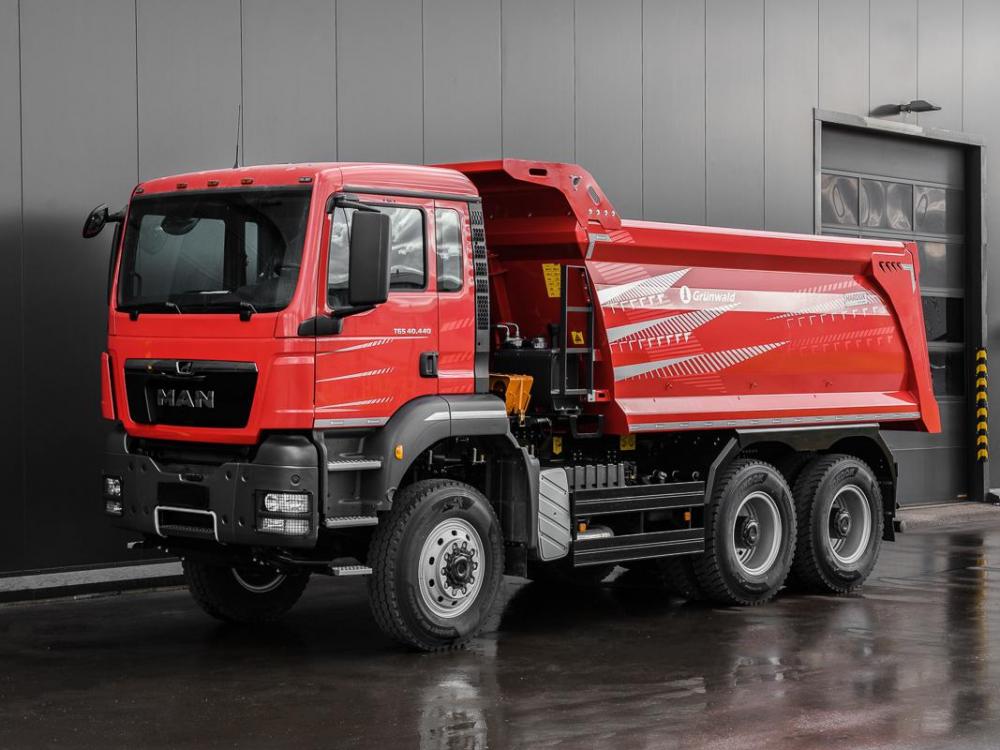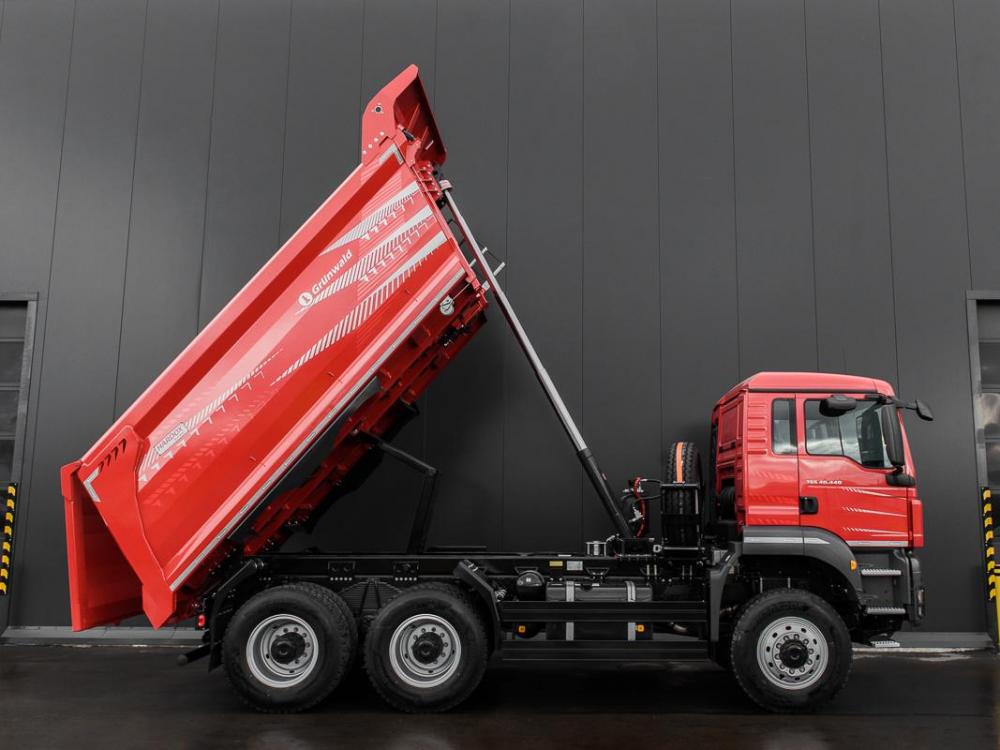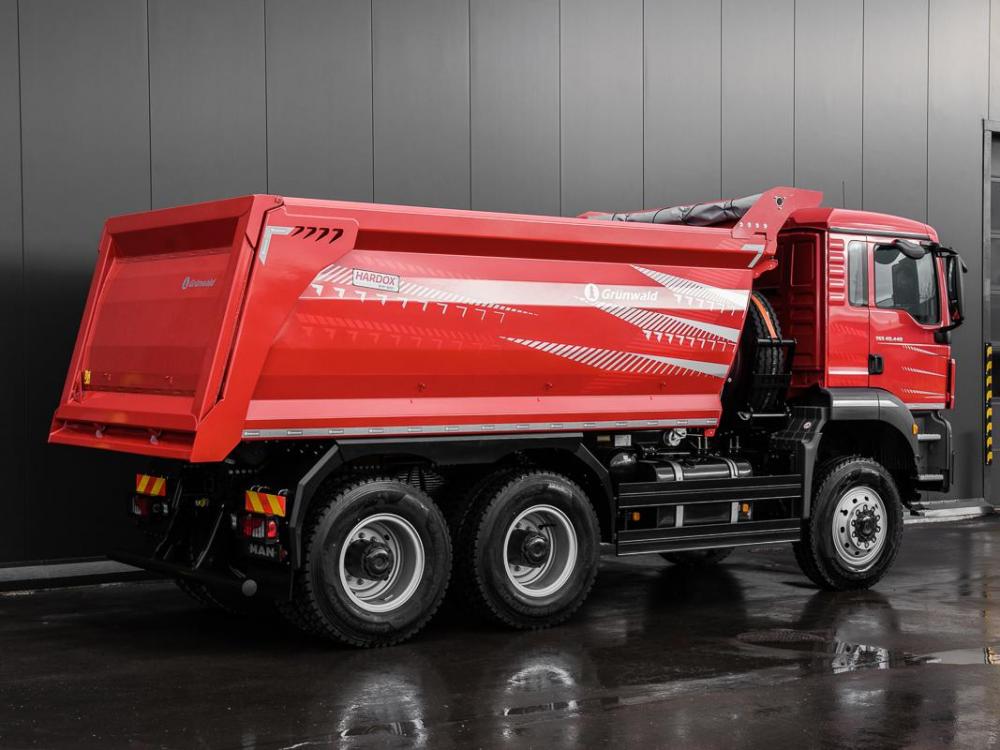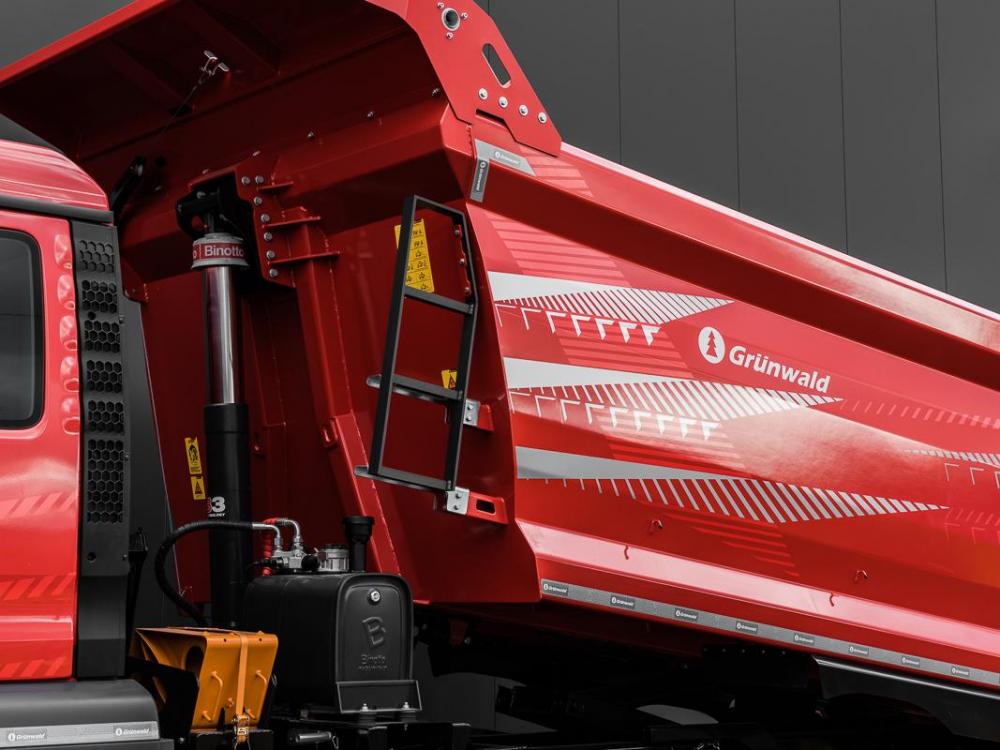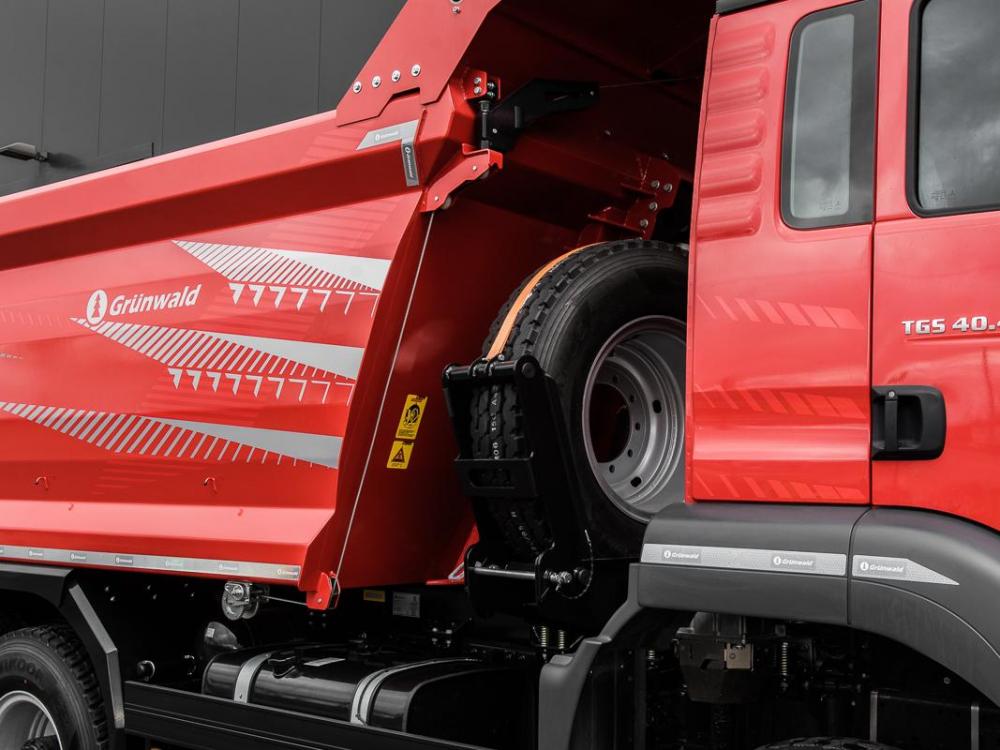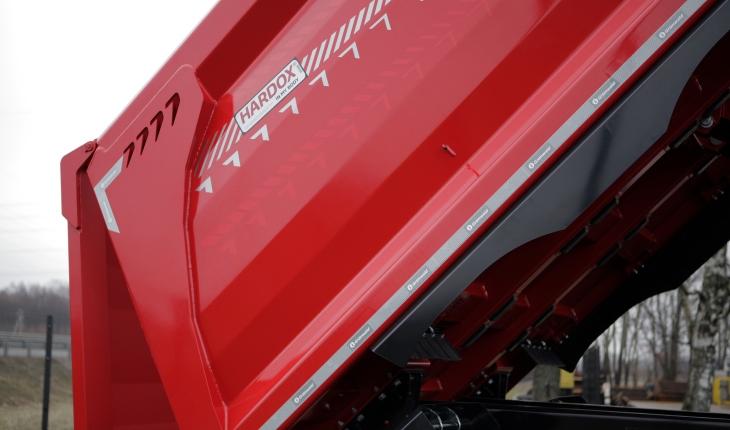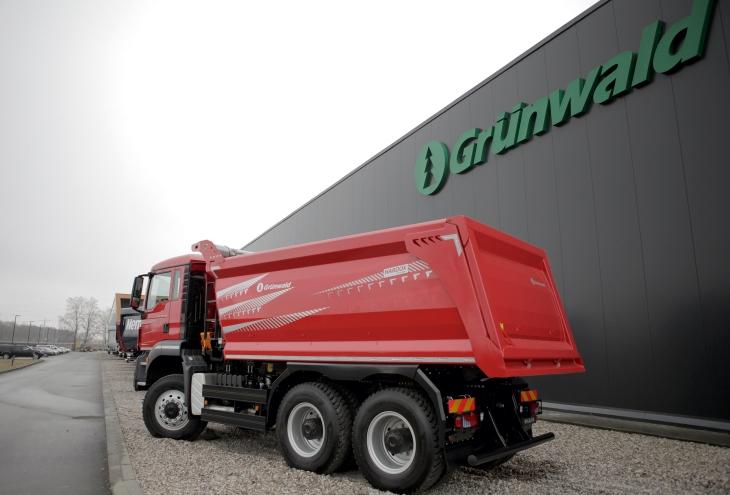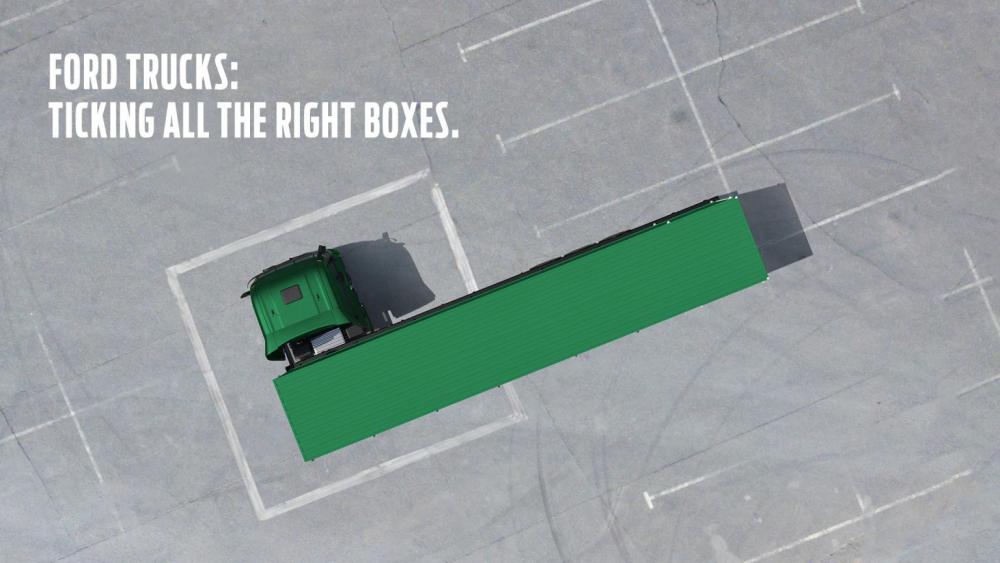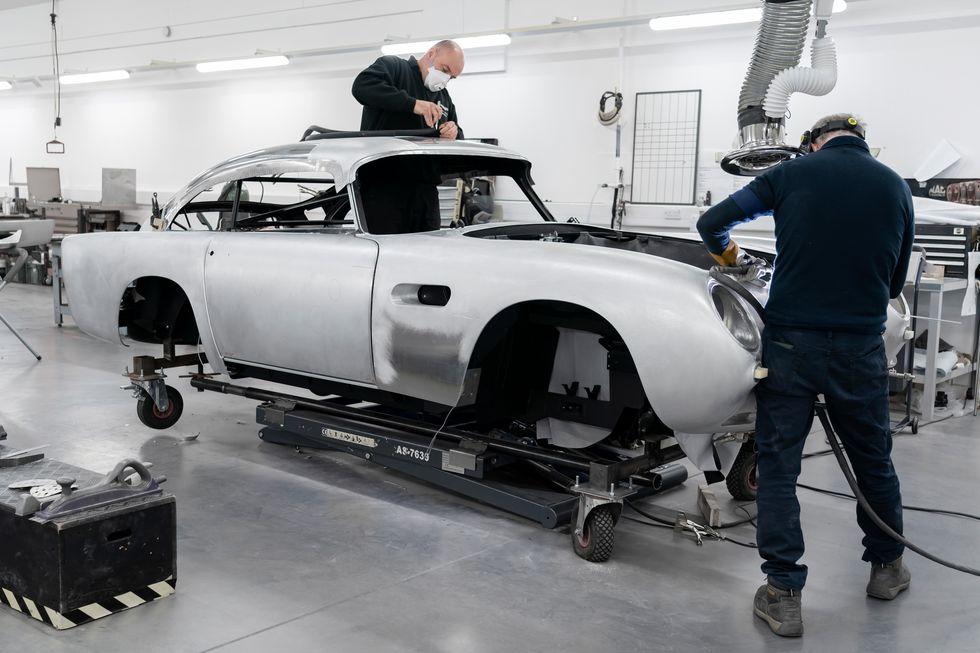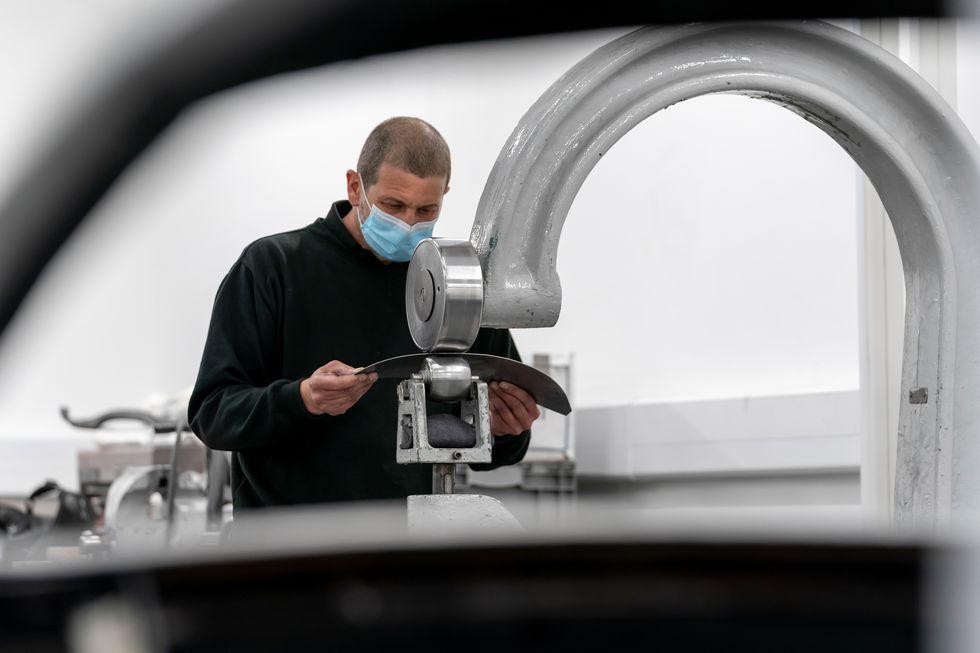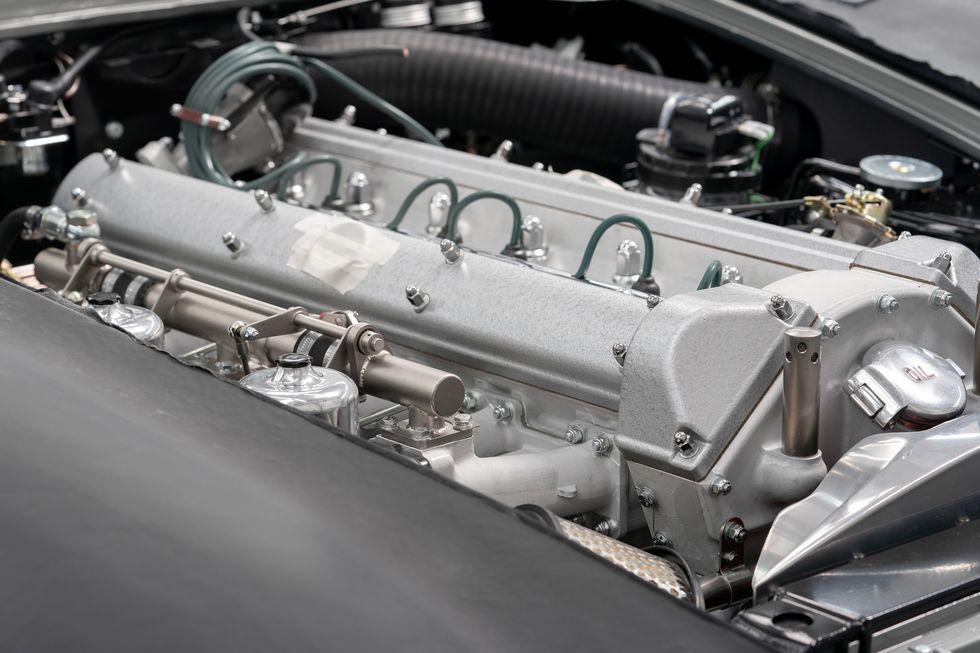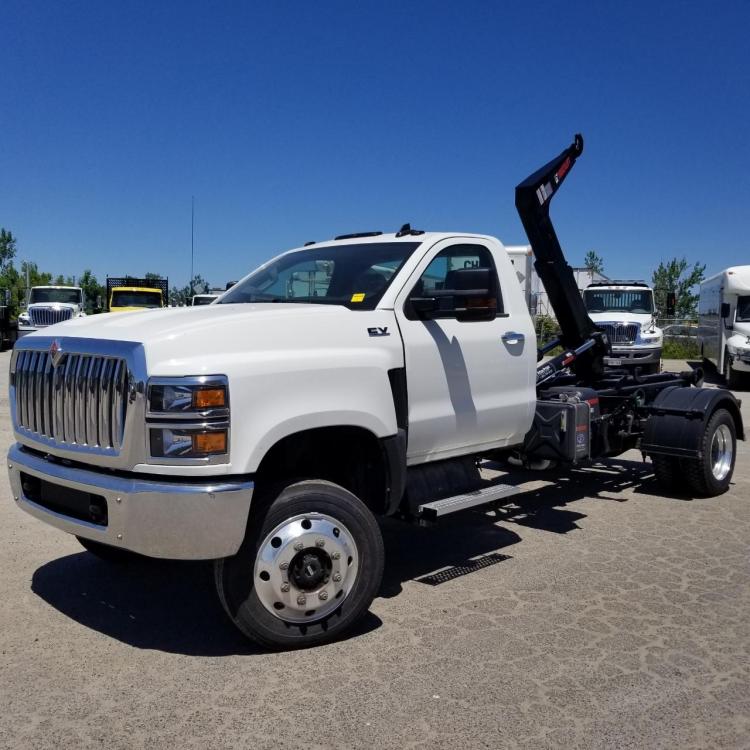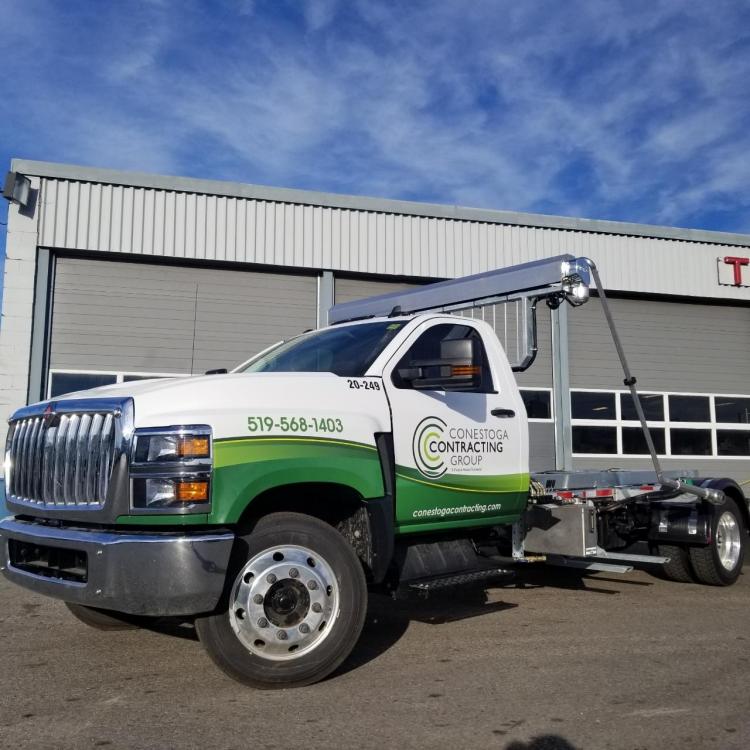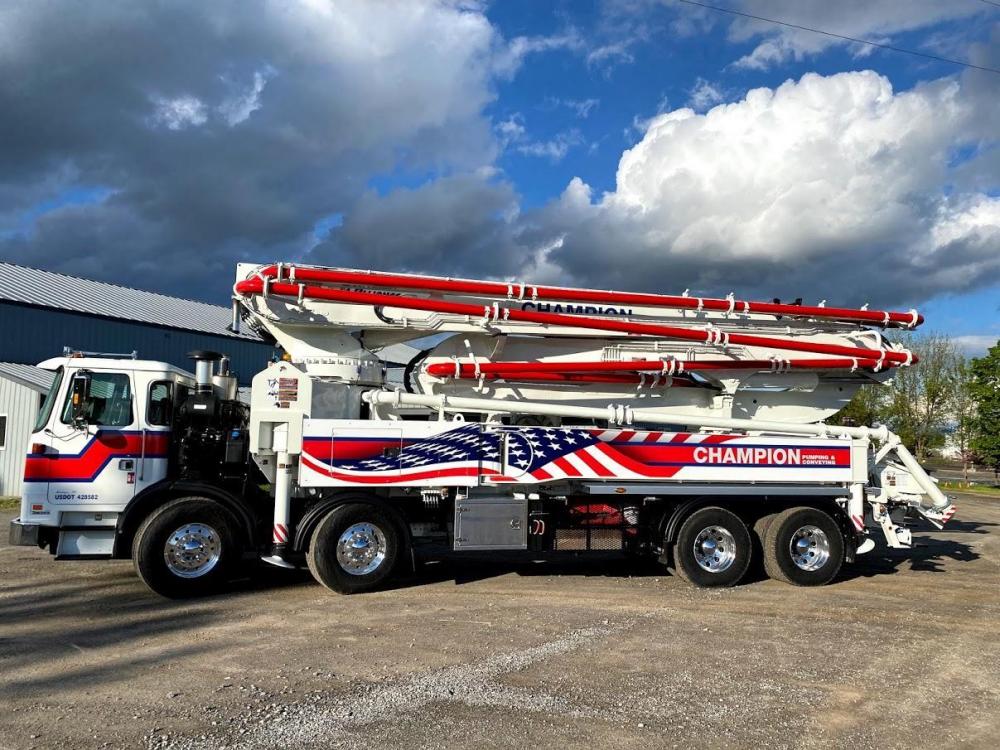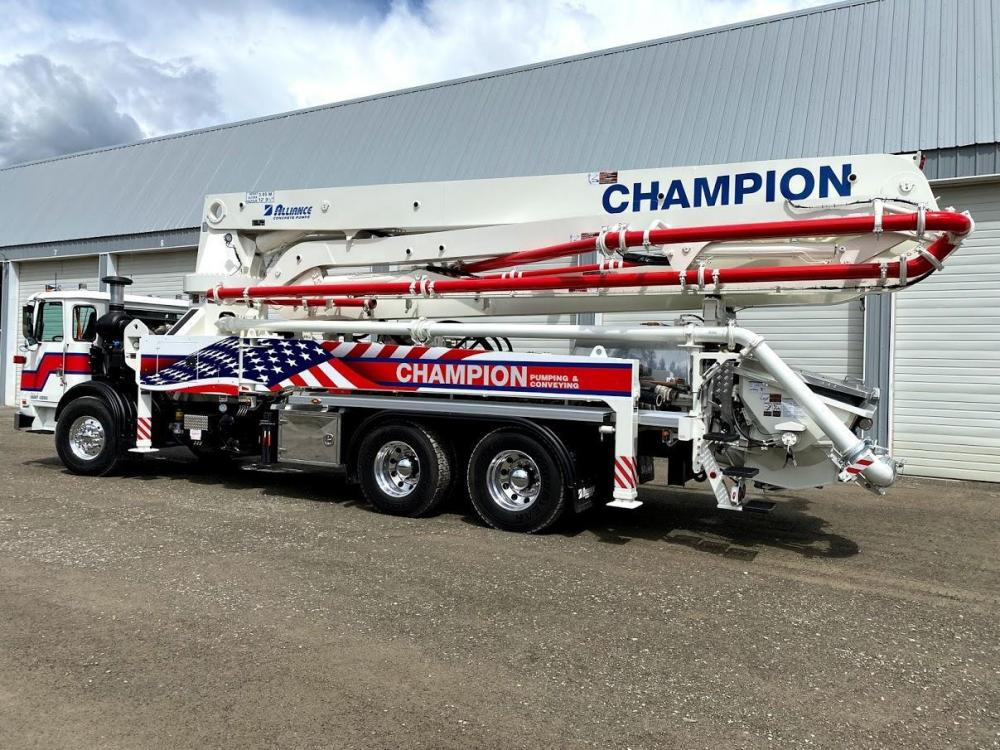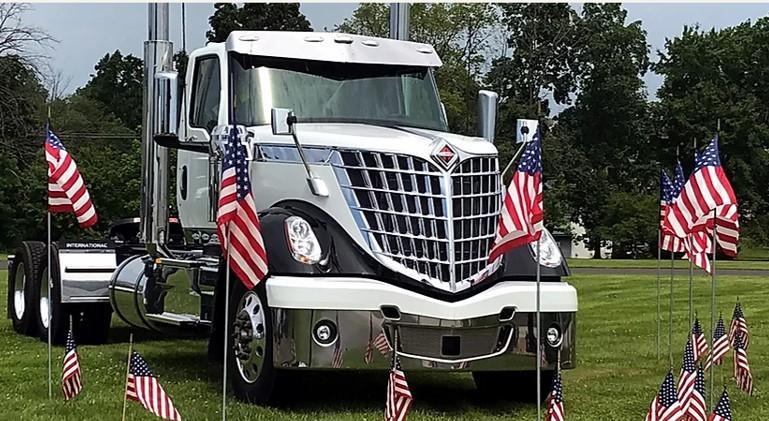
kscarbel2
Moderator-
Posts
18,886 -
Joined
-
Days Won
114
Content Type
Profiles
Forums
Gallery
Events
Blogs
BMT Wiki
Collections
Store
Everything posted by kscarbel2
-
BBC / June 8, 2020 The US reported a record of more than 60,000 daily confirmed cases of coronavirus on Tuesday, according to Johns Hopkins University. The previous highest tally was 55,220, which the US recorded on 2 July. The latest figures come as the states of California and Texas each reported more than 10,000 new daily cases. Dr. Anthony Fauci, infectious disease expert and adviser to the White House on coronavirus, said the US was "knee-deep" in its first coronavirus wave. The US has had, by far, the highest number of confirmed cases and deaths of any country. More than three million infections have been recorded across the US since the beginning of the pandemic. Covid-19 has been linked to over 131,000 deaths in the US.
-
Volkswagen management tumult spills over to truck subsidiary
kscarbel2 replied to kscarbel2's topic in Trucking News
This is huge in itself, and hugely negative for Navistar. Renschler is the "truck guy", the key to making Traton work. His chosen replacement is a finance guy (no offense to finance guys). In my opinion, firing Renschler is disastrous for the Navistar partnership, and MAN. Scania knows how to run itself. This is what happens when car guys make decisions on a truckmaker (we've seen it before with Ford, and GM heavy truck) -
Bloomberg / July 7, 2020 FRANKFURT -- Volkswagen Group's series of executive shake-ups is reaching its heavy-truck division Traton, with the surprise departure of the unit’s chief raising questions about its future strategy. Andreas Renschler will leave VW’s management board effective July 15 and be replaced by Matthias Gruendler, the former CFO of the Munich-based truck unit, according to a statement Tuesday. Traton management board member Joachim Drees, who leads the MAN trucks business, also will leave his post, as will personnel chief Carsten Intra. Intra will replace Thomas Sedran as head of VW’s light commercial vehicles division. Sedran, a key figure behind VW’s alliance with Ford Motor Co., will assume responsibility for asset management at the commercial vehicles and machinery operations. VW group has made several management changes over the past weeks amid internal tension that has risen from costly efforts to electrify its lineup while also coping with the biggest industry slump in decades. Tesla zoomed past the industrial giant in terms of market capitalization early this year and now has more than tripled VW’s valuation despite selling a fraction as many vehicles. Executive overhaul Former VW brand COO Ralf Brandstaetter was promoted to the brand chief position last month after group CEO Herbert Diess lost direct control following a clash with key supervisory board members. VW brand development chief Matthias Rabe moved to the British luxury-car marque Bentley and VW group purchasing chief Stefan Sommer abruptly left the manufacturer. The new CEO of VW Group's Audi brand, Markus Duesmann, who took over at the group’s premium-car unit in April, plans to accelerate a restructuring push to restore profit margins. VW pushed through an initial public offering of Traton last year after some back-and-forth that dragged on for months, but proceeds fell short of expectations. Navistar implications Traton also made a takeover offer for U.S. peer Navistar International earlier this year. VW officials have signaled the strategic logic for the deal remains intact but have sent mixed signals about when and under what conditions the deal might go ahead. Navistar shares slumped following Traton’s announcement, falling 5.9 percent to close at $27.17 Tuesday in New York trading. Navistar’s stock is still up 13 percent since Traton made its $2.9 billion offer in January. “From a personal point of view there is no better point in time to leave and to hand over the business to a very experienced successor,” Renschler said in an internal letter to employees seen by Bloomberg. “With Matthias Gruendler, who some of you should know as our former CFO, as my successor I am sure that you will support him as much as you supported me.”
-
-
Note the cast Ford emblem on the axle flange of Ford Truck's proprietary 32-tonne (70,548lb) planetary hub reduction drive axles.
-
Russian trailers and tippers from Grunwald withstand the harshest environments thanks to Hardox® steel SSAB / May 14, 2019 When Russian trailer manufacturer Grunwald needed a high-strength steel that could withstand even the most demanding environments, it turned to SSAB for help. Producing high quality, lightweight trailers that can operate in the harshest environments is all in a day’s work for Russian trailer manufacturer Grunwald. The company is a leading producer of semi-trailers and tipper superstructures, producing more than 1,500 vehicles since it was founded in 2007. Despite its relatively short history, Grunwald is now successfully competing with long-established trailer manufacturers to supply vehicles to northern Europe, Russia and other countries in the Commonwealth of Independent States. High quality materials are critical to Grunwald’s manufacturing, which takes place at one site in Moscow and another two in the Kaliningrad region of Russia. “Steel is the main material we use in manufacturing – and we need it to be the best,” explains Mikhail Bagin, Grunwald’s head of marketing. “The steel has to be able to withstand harsh environments as our trailers are used all over Russia. Trailers must operate in all weathers and extreme temperature and climatic conditions.” For its steel requirements, Grunwald uses Nordic steel company SSAB as its key supplier. “We appreciate the deep technical knowledge and SSAB experts’ years of experience,” explains Bagin. “SSAB steel has been widely used in production at Grunwald for a long time.” When it comes to steel that can operate in tough environments, SSAB’s Hardox® wear plate abrasion-resistant steel is used by Grunwald throughout its trailers. “We choose Hardox® because of its excellent resistance to both wear and the formation of dents and cracks – even in the harshest operating conditions,” explain Bagin. “Vehicles produced using Hardox® are characterised by low weight, improved technical and operational characteristics, durability, resistance to loads and improved fuel efficiency.” In Russia, there has been a recent tightening of weight restrictions on roads, making the overloading of trucks illegal. Carriers now want to increase the legal payload using modern, lightweight commercial equipment, and SSAB high strength steel enables the trailer manufacturer to reduce trailer weight, meaning heavier loads of cargo can be transported. “Thanks to the smaller weight of our semitrailers, our customers can transport more cargo, but still work without violating weight control requirements. That means a strong competitive advantage and greater profitability,” Bagin explains. Grunwald trailers and tippers are now certified under the Hardox® In My Body program, which confirms that its products, have passed strict quality control and are approved as by the SSAB board. Specialists within wear and structural technology carefully analyze each application regarding welding quality, manufacturing process and design. The sign of quality with premium ingredients gives you as a user a significantly higher used equipment value.“Due to the fact that our products are certified under the program, we’re given priority access to the latest SSAB developments in materials science, applied technology and production methods, as well as prioritized marketing support” says Bagin. “This helps to make our semi-trailers even more advanced and efficient. And for our customers, it means they know they’re getting a first-class product.” These customers now include MAN, Volvo and Renault, for whom Grunwald has manufactured tipper superstructures made of Hardox® steel. The Russian market is also interested in the tipper superstructure product, says Bagin. “We now plan to co-operate with other OEMs on developing and manufacturing tipper superstructures. And just like our other products, when it comes to our choice of hard-wearing steel, we will be choosing Hardox® wear plate from SSAB.” Hardox® provides tough steel solution Hardox® wear plate is the world’s leading abrasion-resistant steel; it’s hard through and through, from the surface down to the core. For customers, this means extended service life and high productivity, even in the most challenging environments. A Russian manufacturing success story Working with German design engineering teams, Grunwald began to manufacture semi-trailers in 2007. The aim was to produce semi-trailers of German quality but heavy-duty enough for Russian roads. Today, the Grunwald plant produces more than 15 different semi-trailer models. .
-
Ford Trucks Russia / June 30, 2020 Ford Trucks introduces a new version of its popular twin-steer Model 4142D 8x4 construction [vocational] chassis specifically engineered for the needs of Russian construction companies. Equipped with a Grunwald body made from HARDOX steel 450It, the Ford 4142D delivers in performance, operating economy and legendary durability. .
-
Ford heavy trucks offers low fuel consumption, long service intervals and convenient payment options, providing cost-effective, high performance models for all your needs. With Ford Trucks, your business is always on the move. #SharingTheLoad #FordTrucks .
-
Bloomberg / July 7, 2020 Senate Majority Leader Mitch McConnell is appealing to everyone in public life to urge people to wear masks to control the spread of COVID-19. “This is not over. We are seeing a resurgence in a lot of states,” McConnell said at one of three press conferences he held Monday in Kentucky. “Look, the single most important thing each of us can do to not only help ourselves but protect our friends and neighbors and everyone around us is not complicated — to wear a mask,” McConnell said. “It ain’t confusing. It’s really simple.” McConnell says everyone in public life should set an example by wearing masks and urging people to wear them. “We all need to echo that all across the commonwealth and all across the country,” he said. McConnell blamed soaring case counts on people not taking the virus seriously enough.
-
The experience of one individual, Richard Quest, with Covid19 The cough has come back, without warning and seemingly for no reason; so has the fatigue. True, neither are as debilitating as when I had the actual virus, but they are back. Like many others, I am now coming to realize that I am living and suffering from the long tail of Covid-19. I got infected back in mid-April. The onset of symptoms came quickly. I suddenly noticed I was feeling very tired and I had a new cough. I got tested and the morning after I received a phone call from the medical center, I had tested positive for coronavirus. The virus is like a tornado. When it lands, it swirls through the body, causing chaos, confusion, coughs, wreaking damage to each organ it touches. Some won't survive its visit. For those that do, when it has gone, one surveys the damage to the human landscape and realizes it's much greater than first thought. My symptoms were on the milder side: I never had breathing difficulties, or loss of sense or smell. I was wiped-out tired and I always had "the cough," which has now returned. The Covid cough is not like your usual cough-it-up deep cough (what doctors politely call a "productive cough.") It is very distinctive. It is a dry, raspy, wheezy, cough. In my case, lots of short, expelling gasps of air, followed by a long, deep, chest-wrenching expiration cough, that has standers by wondering if I am going to keel over. I have tested negative for the virus and positive for the antibodies, and my doctor says it won't return. But there are days when I feel that it has. I am also discovering new areas of damage: I have now become incredibly clumsy. I was never the most lissome person, no one ever called me graceful, but my clumsiness is off the chart. If I reach for a glass, or take something out of a cupboard, I will knock it, or drop it on the floor. I have tripped over the curb and gone flying. I fall over furniture. It is as if that part of my brain, which subconsciously adjusts hand and movement to obstacles it sees, isn't working. At times there's a sense of mild confusion. The micro delay in a thought, the hesitation with a word. Nobody would notice but me. My digestive system is peculiar, to say the least. It doesn't matter whether I call them symptoms, traits, or wreckage -- my body doesn't feel quite right. The doctors try to reassure me, saying, this will wear off, but they can't tell me when. Last week was bad. The cough has been with me for days, I have been tired and needed to take naps. I tripped over the camera tripod then fell over a chair! I am concerned but not panicked, yet. This week already feels much better. For those who have not had Covid, or witnessed the mess it leaves behind, again, I urge you, do whatever you can to avoid this tornado. It will roar through the body -- kill some on the way -- injure all in its path -- and then when you think "well, thank God that's gone," look around, the damage is strewn everywhere and will be with you long after the crisis has passed. Covid is a tornado with a very long tail.
-
…………I’m going to order one of these new DB5s. ----------------------------------------------------------------------------------------- Aston Martin Back in Production and Building Goldfinger DB5 Cars Mike Duff, Car & Driver / July 6, 2020 English sports-car maker Aston Martin has cheerful news from it's former HQ in Newport Pagnell, now the base for the company's Heritage division. The company has restarted limited production of the iconic DB5, 55 years after the last of the original run of cars was built. These are the first of the Goldfinger continuation cars, built with replicas of the gadgets that turned the DB5 driven by Sean Connery's James Bond in that movie into arguably the most famous film car of all time. While the replicas won't be street legal in most parts of the world, the company says it has already sold the vast majority of the limited-to-25 run, despite an "ex-works" price of about $3.4 million at current exchange rates. According to an Aston spokesperson, there are only a couple still up for grabs. In this time of coronavirus, enhanced precautions are being taken by those working on the DB5, as made clear by the images the company has released of mask-clad workers working well apart from each other. The U.K. is still under shelter-in-place lockdown, but factories are reopening under social-distancing protocols, and Aston Martin's Gaydon and Saint Athan plants have also restarted limited production. The DB5 Goldfinger is the latest of Aston's Continuation models, following on from the DB4 GT and DB4 GT Zagato, with the construction of each car taking around 4500 hours. We've already experienced some of the car's many Bond-inspired gadgets up close, many of which were designed by a team led by Chris Corbould, the Oscar-winning special effects director who has worked on 15 films featuring the famous secret agent. (Separately, Aston produced eight carbon-bodied DB5 replicas for stuntwork on the most recent Bond film, No Time to Die, which has been delayed until the fall.) For the Goldfinger cars, the list of additional equipment includes a smokescreen, revolving license plates, battering rams, and a removable passenger-seat roof panel for the infamous ejector seat. It also gets non-lethal replicas of the twin Browning machine guns that deploy through the film car's front turn signals, an oil-spray system that actually fires water, and a simulated tire slasher. Functions can be operated from within the car—which is mechanically almost identical to an original DB5—or via a remote control to enable owners to better see them in action. Deliveries to the first customers—many of whom, we expect, live in hollowed-out mountains stroking white cats—will begin early in the second half of the year. . .
-
The Good Shepherd is a superb book, a must-read for people interested in WW2 history.
-
BBC / July 7, 2020 Tom Hanks, who recovered from Covid-19 earlier this year, has said he "has no respect" for people who decline to wear a mask in public during the pandemic. The actor and his wife Rita Wilson tested positive for coronavirus while filming in Australia in March. Many governments now recommend face coverings, but they are not mandatory in most places. Hanks said: "I don't get it, I simply do not get it, it is literally the least you can do." The actor was speaking to the Associated Press about face coverings while promoting his latest film. "If anybody wants to build up an argument about doing the least they can do, I wouldn't trust them with a driver's licence," he said. "I mean, when you drive a car, you've got to obey speed limits, you've got to use your turn signals [indicators], you've got to avoid hitting pedestrians. If you can't do those three things, you shouldn't be driving a car. "If you can't wear a mask and wash your hands and social distance, I've got no respect for you, man. I don't buy your argument." The refusal of some members of the public to wear masks is a particular issue in the US, which [as a result] leads the world in coronavirus deaths and infections. Hanks is a two-time Oscar winner, taking home the best actor prize for both Philadelphia and Forrest Gump in the 1990s. His new film, Greyhound, was originally due to be released in cinemas but will now be screened on Apple TV instead. In the movie, Hanks plays Commander Ernest Krause, a naval officer embarking on his first mission of World War Two. Hanks also wrote the screenplay, adapting it from the 1955 CS Forester novel The Good Shepherd. In his three-star review of the film, Empire's Ian Freer said the film was "a serious, well-intentioned slice of WWII naval history full of compelling detail and good action but lacking the dimensions and dynamics to make you truly feel it".
-
Selling to younger (than me) customers, it's about lifestyle. Selling to me, it's more about what I'm accustomed to, recalling the days of exploring with an MB, CJ-2A, CJ-3A, M-38, CJ-3B or FJ-40 but with modern day comfort.
-
That is a question, and I'm going to say yes. Crossover market share will be victim.
-
Clearly, Ford is "all in" with the Bronco, which means Bill Ford said go for it.
-
Ford may expand off-road line beyond Bronco, Bronco Sport Michael Martinez, Automotive News / July 6, 2020 DETROIT — Ford Motor Co. is not just introducing the Bronco and Bronco Sport next week; it's launching a vehicle line that could grow to include more off-road nameplates. Ford on Monday confirmed Bronco would be a sub-brand, using the "Built Wild" tag line. Executives as far back as early 2019 had been telling dealers its off-road offerings would be a "family" of vehicles. That brand will include two-door and four-door versions of the Bronco SUV, as well as the smaller Bronco Sport crossover, a name Ford confirmed Monday after previously referring to it as a small, rugged off-road utility. There's room to expand the Bronco line beyond those models, officials say. "We'll start with the three models that we have," Mark Grueber, Ford's U.S. consumer marketing manager, said on a call with media. "We will continue to look to where there's customers we could satisfy with Bronco and how to continue to expand the brand in the future." Ford is planning to introduce a Bronco-based pickup in 2024, according to a forecasting firm, and the automaker is also planning a compact, unibody pickup next year, which reports have said could be called Maverick. Dave Pericak, Ford's director of icon vehicles, said each model added to the brand must live up to the Bronco name. "You can make the mistake with a family of vehicles if you just start peppering that family with things that don't live up to the core tenets with what it is you're building," he said. "Everything we do ... it will have to live up to that same DNA and that same goal that the Bronco has, otherwise it doesn't belong in the family. We're not just badge-engineering. It's not the name that makes the vehicle, it's the vehicle that makes the name." Ford on Monday also formally announced the creation of Bronco Nation, a Ford-certified online community that went live earlier this year and will help connect enthusiasts for trail rides and other meetups. Robert Parker, a retired Lincoln marketing executive and Bronco enthusiast, told Automotive News last month that he advised on the site's creation. As part of its bid to connect fans, Ford said it would create experiences called "Bronco Off-Roadeos," which it described as outdoor adventure playgrounds to help them learn how to take their vehicles off-road. . .
-
Correct, the mask doesn't stop the virus. Rather, it stops the aerosolized saliva and sneezes that carry it.
-
Bingo, exactly. And if everyone wore the cheaper and available surgical masks (N95 mask being in short supply) when out in public, we would see a massive drop in transmission. Guys, I lived through a serious epidemic and speak from experience. I humbly speak out of a desire for the BMT family and their families to stay healthy while we await a vaccine.
-
Hytran in 2 stick
kscarbel2 replied to Ditchdiggerjcf's topic in Antique and Classic Mack Trucks General Discussion
Though I've been around many years, I still learn something new with each new day. Each new day is a new class-in-session. As for opinions, when you step out of the box and look in, everyone's thoughts here are not that far apart. And there's some extremely sharp people here with vast amounts of knowledge........true "fountains of knowledge". (Not to mention Emmy-nominated YouTube star Paul from Australia) BMT members are high caliber people, and it's a privilege to know everyone here. -
Check out the latest pair of pumps from our good friends at Champion Concrete Pumping Inc. & Conveying. This time they chose our JXLR 38m and JXLRZ 47m mounted on an Autocar Trucks chassis. Thank you for the continued support and we look forward to building another one soon! #allianceconcretepumps Always Up - Autocar Trucks .
-
Happy Fourth of July, from Autocar Trucks ! #4thOfJuly2020 Video - https://www.facebook.com/AutocarTrucks/videos/269357874294628/?hc_ref=ARRRHTf2V30XiPgSYvMrYfPuGVNCp9ejhArA5hjAE1TMbnAUAudXa4i-mHO5kz7anlI&fref=nf&__tn__=kC-R
-
U.S. Treasury to Loan $700 Million to Trucking Firm YRC
kscarbel2 replied to kscarbel2's topic in Trucking News
I respect Ford for not taking a bailout. GM did pay back their loan, but that FCA did matters little to me since the U.S. government gave Chrysler to Fiat (the Agnelli family) for basically nothing.
BigMackTrucks.com
BigMackTrucks.com is a support forum for antique, classic and modern Mack Trucks! The forum is owned and maintained by Watt's Truck Center, Inc. an independent, full service Mack dealer. The forums are not affiliated with Mack Trucks, Inc.
Our Vendors and Advertisers
Thank you for your support!



